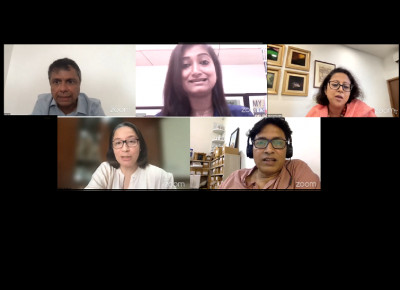Marketers, media agencies reveal deep insights on market potential of the East
In keeping with its endeavour to have a 360-degree coverage of all markets, Adgully turned the spotlight on the sparsely covered East Market as part of its Adgully4um knowledge session. Titled ‘An Advertiser’s Perspective: A View of the Eastern Market’, the special Web conference sought to understand the dynamics of the East market comprising Assam, Bihar, Jharkhand, Odisha, and West Bengal. As per TAM AdEx data on the advertising outlook of the East market for the January to April 2021 period, prior to the onset of the second wave of the COVID-19 pandemic, the East Market showed rapid signs of recovery, with ad volumes on television and print media growing by 57 per cent and 25 per cent, respectively. More than 14,000 brands advertised during this period, with 1,200 new brands on TV and 7,430 new brands on print, compared to the same period last year, according to data provided by TAM Media Research.
IMAGEXX Awards 2021 to attend - REGISTER NOW
Monaz Todywalla, CEO, PHD India, observed, “We’ve picked up a couple of peculiarities in West Bengal more than any other market in the last decade. The market is exceeding open to innovations from a media standpoint. There is a dependence on TV, but over the last couple of years there’s an increasing dependence on digital and it has seen even more acceleration in the last two years. Another peculiarity in the East is that there is a lot of local consumption of content.”
Jai Lala, CEO, Zenith India, noted, “The East market is broken up into West Bengal, which has been part of all media plans for many brands across the country. And markets like Assam, Bihar, and Chhattisgarh, which over the last few years have got increasing attention from marketers. West Bengal is an evolved media market with various regional TV channels. Print is very popular and digital is gaining traction, where we are seeing customised digital solutions for WB.”
GAMEXX Awards 2021 Early Bird Discount Extended Last Date - Wednesday, June 30, 2021 - ENTER NOW
The interest part is that Assam, Bihar and other parts of East market are becoming a part of media plans. Earlier, they were covered by national media channels but now there are specific inputs going into these markets. “I wouldn’t look at East as one market, but rather as West Bengal and other markets, where WB obviously leads in ad spends while the other markets are gaining,” Lala added.
Poulomi Roy, CMO, RSH Global, noted, “In the last decade, we have seen Hindi GEC content replicated for regional channels. But in the last few years, I’ve observed that content created for Bengali regional channels is being replicated on national TV channels and has met with a lot of success. Earlier, companies that did not have a very strong sales and distribution network did not invest in smaller markets. However, thanks to e-commerce which has increased the penetration into these markets, brands are advertising their products to customers in smaller markets. It is interesting to see how online retail is influencing advertising spends in these smaller markets.”
Suparna Mucadum, Head of Marketing and Brand Custodian, Keventer Agro, said, “Our research has found that in the last decade, the entire portion size of products has reduced. The East being a cost conscious market, products that have done really well tend to be use-based and priced very aggressively. The smallest markets are absolutely untapped and I am not just talking about Odisha, Jharkhand and Bihar, but also the North East markets. Our brand actually entered the North East first before entering WB and we’ve seen a lot of success with our milk brand under Keventer Agro. Tetrapak has replaced the entire powder milk market in the North East and now we are the second largest player next to a goliath like Amul today.”
According to Sushant Panda, Team lead, Marketing and Communications strategy, Digital initiatives & International Business expansion, McENROE Consumer Products, “Lifestyle desirability has been the highest in the North East market and then travels down from there. The bottom rung of the consumption pyramid has really gone up, which means that there is a larger chunk of people who have joined the consumption classes. Modern retail seems to have bypassed the East and instead the market has jumped straight into ecommerce. The reason why modern retail didn’t work in the East is because you don’t get the right amount of people walking in. The population is not concentrated, but rather distributed. Which is why East has become the largest market for Flipkart by 3-4 percentage points. There was a point about Bengali content being adapted to Hindi, but actually that is part of a larger trend where content is travelling beyond borders and geographies. And content is a great equaliser in my mind. For example, the followers of K-Pop in the North East are extremely high. There is a far greater degree of homogenisation in terms of content, even if the language is different.”
Watch the full session:
















Share
Facebook
YouTube
Tweet
Twitter
LinkedIn